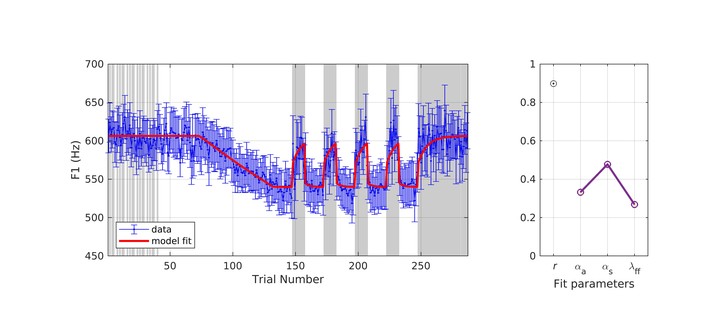 Figure 4. SimpleDIVA model fit to data from an F1 adaptation paradigm
Figure 4. SimpleDIVA model fit to data from an F1 adaptation paradigmAbstract
Sensorimotor adaptation experiments are commonly used to examine motor learning behavior and to uncover information about the underlying control mechanisms of many motor behaviors, including speech production. In the speech and voice domains, aspects of the acoustic signal are shifted/perturbed over time via auditory feedback manipulations. In response, speakers alter their production in the opposite direction of the shift so that their perceived production is closer to what they intended. This process relies on a combination of feedback and feedforward control mechanisms that are difficult to disentangle. The current study describes and tests a simple 3-parameter mathematical model that quantifies the relative contribution of feedback and feedforward control mechanisms to sensorimotor adaptation. The model is a simplified version of the DIVA model, an adaptive neural network model of speech motor control. The three fitting parameters of SimpleDIVA are associated with the three key subsystems involved in speech motor control, namely auditory feedback control, somatosensory feedback control, and feedforward control. The model is tested through computer simulations that identify optimal model fits to six existing sensorimotor adaptation datasets. We show its utility in (1) interpreting the results of adaptation experiments involving the first and second formant frequencies as well as fundamental frequency; (2) assessing the effects of masking noise in adaptation paradigms; (3) fitting more than one perturbation dimension simultaneously; (4) examining sensorimotor adaptation at different timepoints in the production signal; and (5) quantitatively predicting responses in one experiment using parameters derived from another experiment. The model simulations produce excellent fits to real data across different types of perturbations and experimental paradigms (mean correlation between data and model fits across all six studies = .95 ± .02). The model parameters provide a mechanistic explanation for the behavioral responses to the adaptation paradigm that are not readily available from the behavioral responses alone. Overall, SimpleDIVA offers new insights into speech and voice motor control and has the potential to inform future directions of speech rehabilitation research in disordered populations. Simulation software, including an easy-to-use graphical user interface, is publicly available to facilitate the use of the model in future studies.